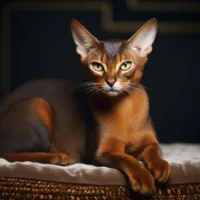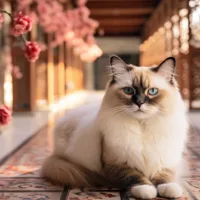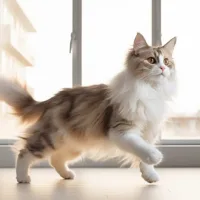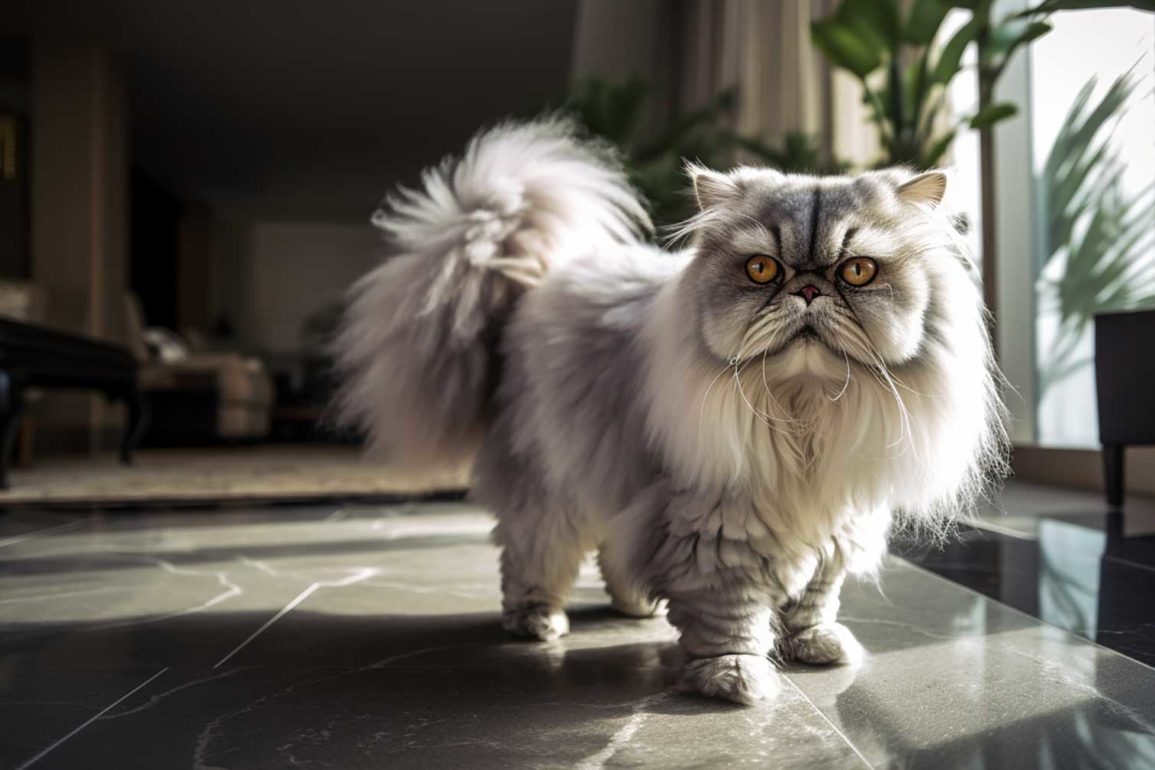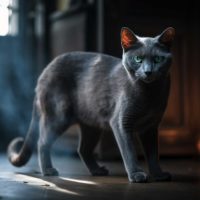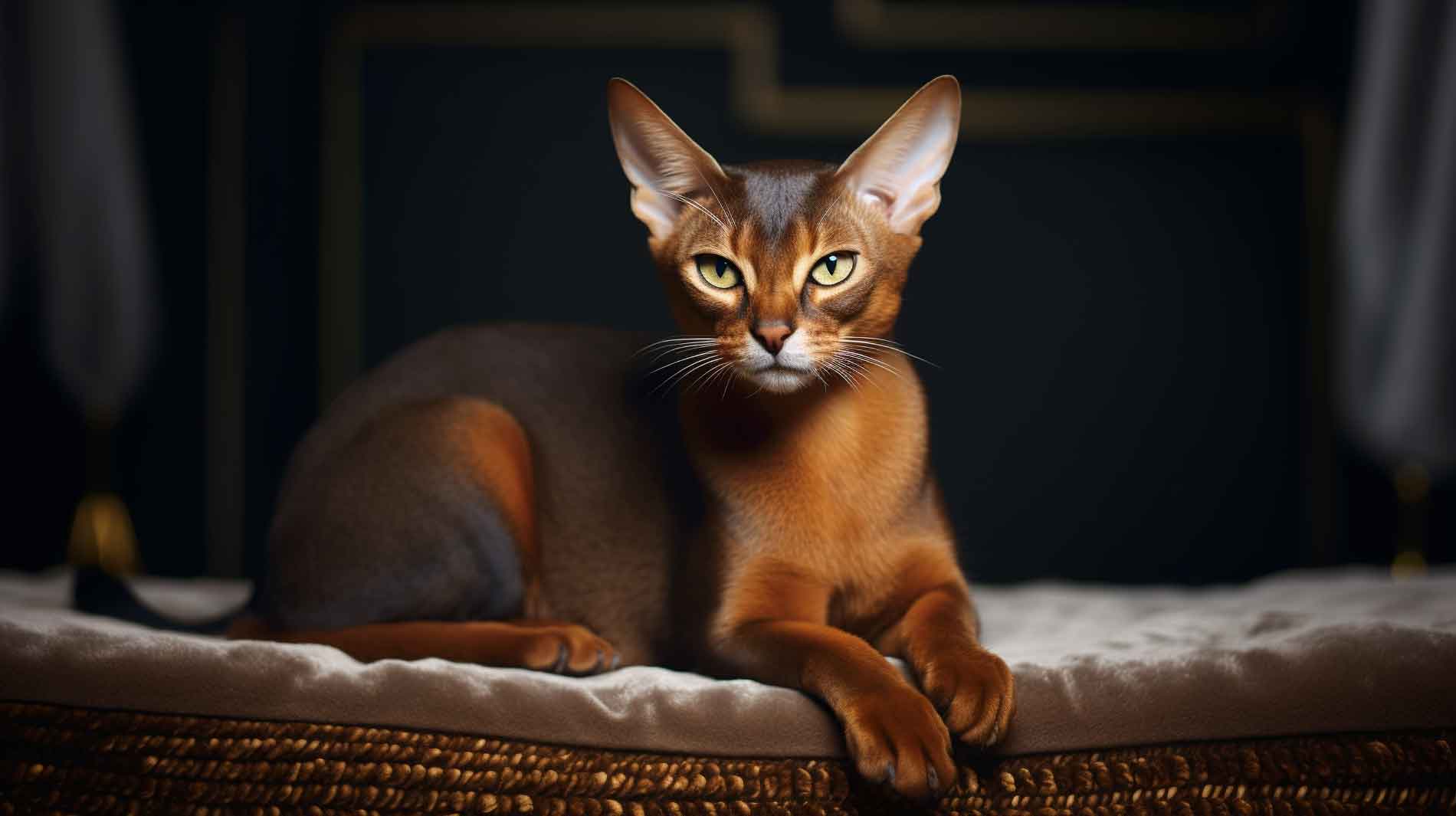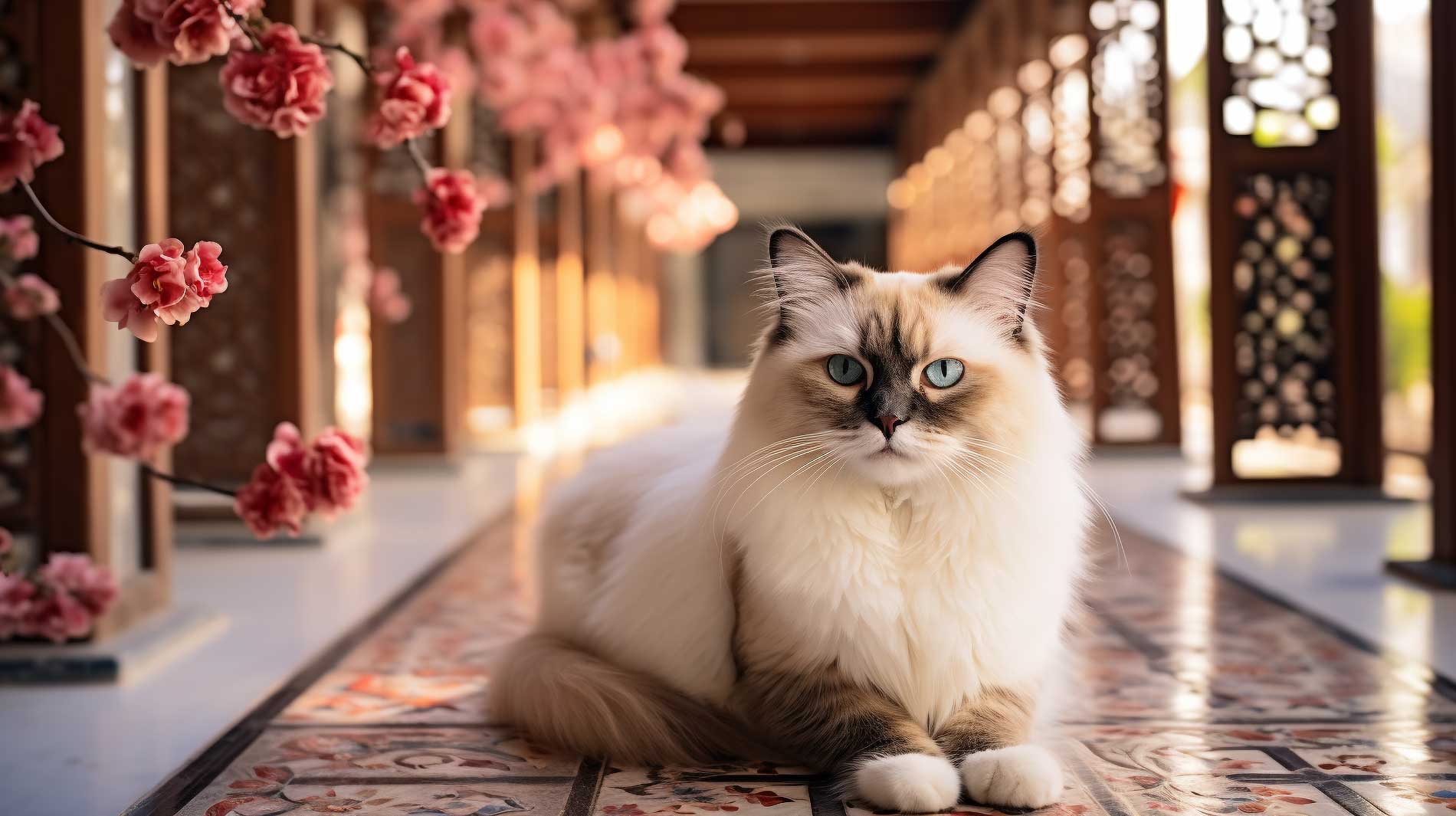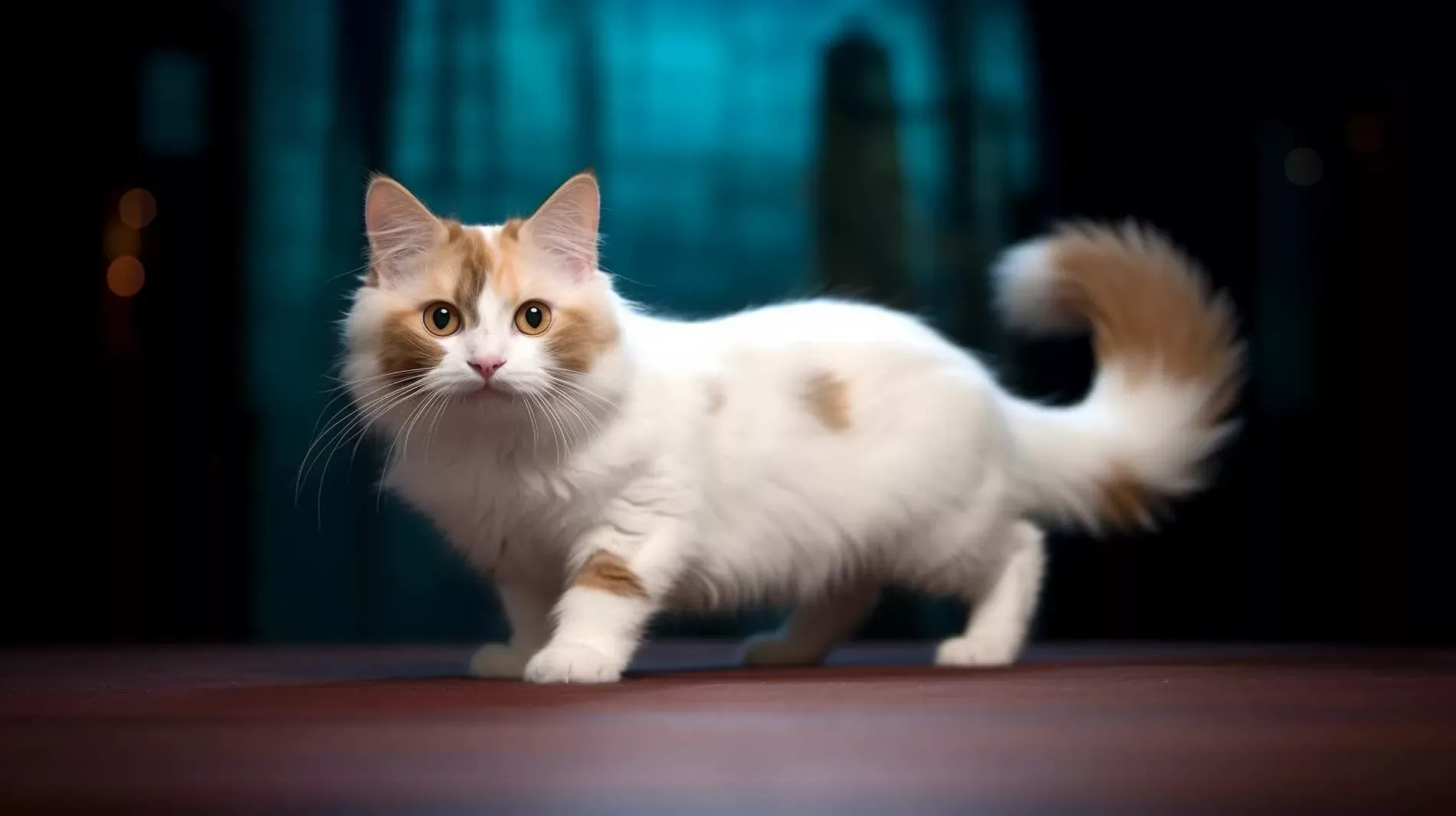Persian cat look & fur – fluffy and gorgeous
Persians are cuddly-looking medium-sized long-haired cats with broad heads, round little faces, and eyes. Their physique is compressed, their legs stocky and their coat very dense. It is up to 15cm long and very luxuriant, especially around the neck. The tail is a maximum of 30cm long but is also graced by long fur. In the last decades, the trend to breed Persians with much too short noses increased, which characterizes “flat-faced Persians”. Therefore, a typical sign to recognize this Persian cat today is the deformed nose and the wide-set eyes, which sit above full cheeks and below a bulging forehead. Due to the unnatural nature of its face, this breed tends to cry “black tears” and pant as it has difficulty breathing. Because of all the health drawbacks, breeding the too-short face can also be called torture breeding. For example, it makes them more vulnerable to colds, but more about that under “health”. Fortunately, many breeders breed these fluffy pets “with nose”, which is known as “doll-face”. This not only looks more natural, but also causes less problems for the cats. Cats that constantly “cry” also look like it, because it leaves dark spots in the corners of the eyes, which crust over time. So, the face must be cleaned regularly, because the cat does not have enough cleaning power with its paws to get rid of the stains. To do this, you can wipe her face daily with a damp cloth.
In addition, the coat must be combed very often with a metal brush, because the heavenly mane, unfortunately, quickly becomes matted. This is due to the dense undercoat of the Persian cat. Because of this, all sorts of things get caught in the magnificent fur. Not only dust, but also litter, sometimes even its own droppings, and not to forget all the flora through which it trudges. So, you should brush the fur completely on a regular basis, including the belly, legs, and around the butt. Not all cats love this in these places, but should at least be used to it so that this grooming procedure remains relaxed for all sides. Once the fur is matted, the only thing that really helps is to carefully cut off the clumps of felt. But for this you better go to the pet groomer, to avoid hurting your fur nose. You can save your pet from this stress by taking care of the lush coat every day. You should also keep in mind that this effort will, of course, add up with every Persian you acquire. You’ll know if your cat needs professional trimming if it gets regular matting despite daily grooming. Then only an airy haircut will help. In combination with skin diseases, which are not uncommon in Persians, a so-called lion cut can also be helpful, where most of the fur is shorn off from head to tail. This allows medicinal pastes to be applied more effectively. The Persian’s claws should also be clipped regularly.
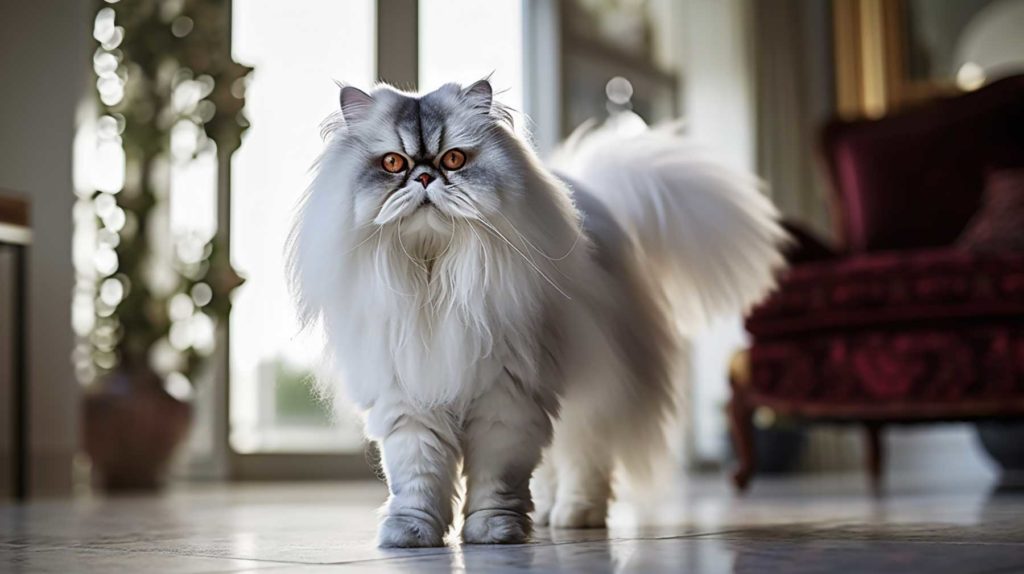
If you’re going to get a Persian cat, you have to accept that her hair is going to be everywhere. She will leave fur spots where she just sat, so to speak, there will be hair floating around in the air, and the jackets on your coat rack will certainly be covered in a soft layer of fur as well. Lint rollers are regularly worth investing in. Here’s a tip: use a rubber glove to get the fur off your fabrics with ease and create less waste.
For Persians, most colors are accepted. Persians may have tabby stripes, tortie, and torbie markings, and be solid and multicolored, with solid being rarer. Accordingly, they come in red, white, black, chocolate, lilac, cream, and blue.
Persian cat health – understanding the risks inherent to them
The extremely short noses due to bred brachycephaly (short-headedness) cause misaligned teeth, too narrow tear canals, eye discharge, respiratory problems, and conjunctivitis. In addition to these problems, Persians are also prone to polycystic kidney disease (PKD). This causes the kidneys to enlarge and lose function over time. In old animals, this can lead to kidney failure. Since PKD is a hereditary disease caused by a mutation in the genes, a good breeder will have their animals tested for these genes early on to avoid breeding cats that would pass on this disease. You can always ask for records proving that the parents of the cat you are interested in are cyst-free (thanks to an ultrasound examination). Although they are mysterious and beautiful to look at, white Persians with blue eyes are usually deaf. However, Persian cats are always born with blue eyes, and the solid eye color is formed only over time.
In general, unfortunately, one must face the fact that Persians tend to have health problems. Diseases concerning skin and hair, periodontal disease, ingrown nails, and eye discharge are, according to a large study, the most frequently diagnosed specific diseases, while skin, eye, and dental diseases are the most common disease groups.1 The probability that a Persian suffers from idiopathic seborrhea is high because it is also hereditary. This is a skin disease that is accompanied by dry, scaly, possibly inflamed patches of skin that can be very itchy and causes an unpleasant odor. Although the symptoms of seborrhea can be alleviated with the help of diet, medicine for external use on the skin, and antibiotics against secondary bacterial infections, it is not possible to cure it completely. Since there is a possibility that brachycephaly makes it even more difficult for Persian cats to do their grooming, you should pay close attention to how badly it affects the cats of the breeder of your choice. The tearing should not be excessive and they should not have problems breathing. If you want to play it safe, you can look for breeders that offer “Doll-face” Persians.
Other diseases that are likely in Persian cats: Progressive Retinal Atrophy (PRA), in which the retinas of both eyes regress, leading to complete blindness. Hypertrophic cardiomyopathy (HCM), in which the heart muscle thickens, which can be kept in check if detected early, but also cannot be cured. Bladder stones, cystitis, and portosystemic shunt (PSS) can also make life difficult for this breed. The latter causes headaches which become evident when a cat pushes her head against walls, and in the long run leads to dementia, coma, and death of the cat. Again, you can inquire if the ancestors of the cat you want to adopt have this condition. Otherwise, a bile acid stimulation test can prove that the cat is free of PSS.
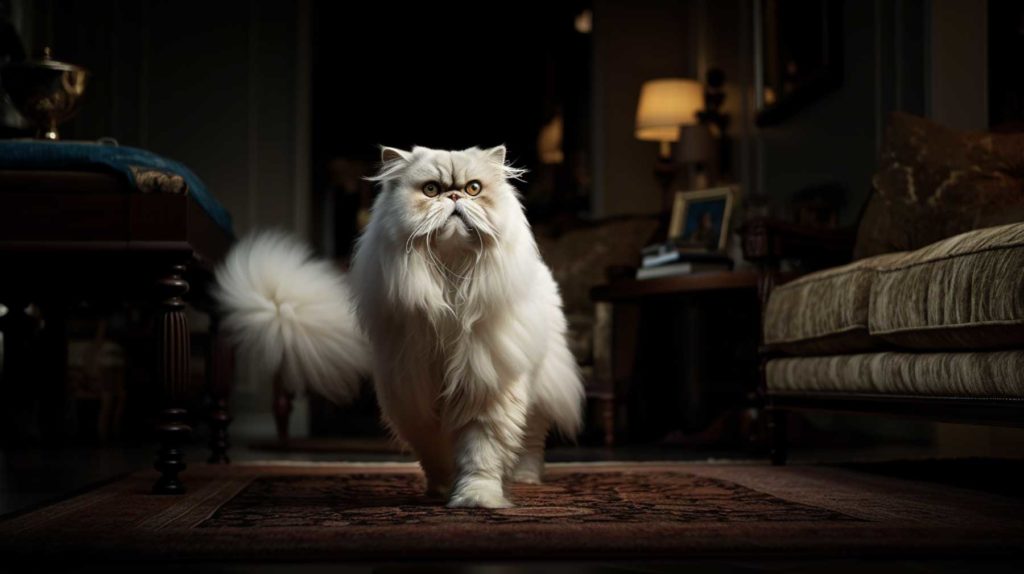

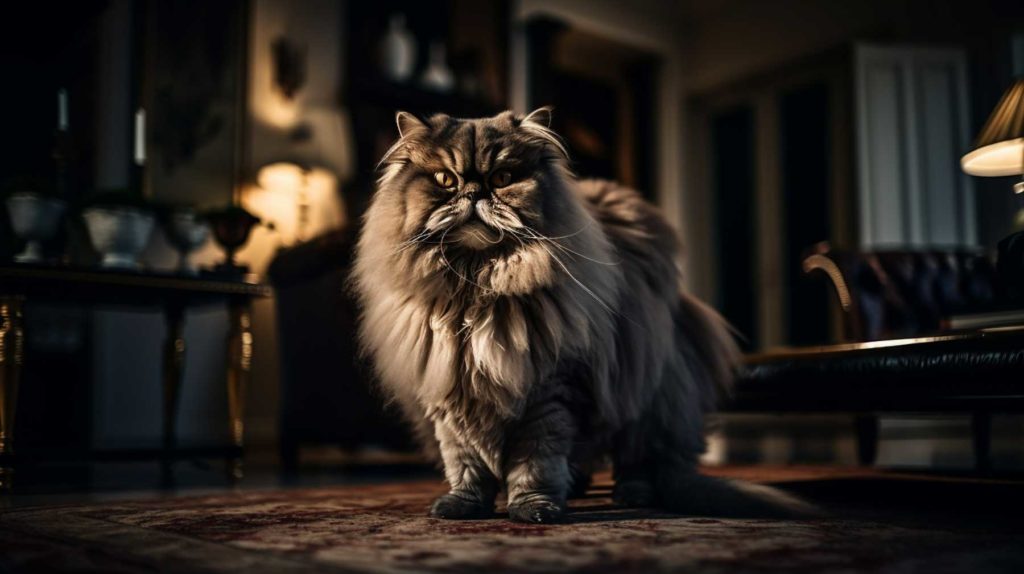
Persian cat diet – gourmet wet food connoisseurs
Because of the tendency of Persians to get bladder stones, their food should always have a high moisture content. Water flushes out everything that can lead to stones and blockages, so as much water as possible is good for the health of the cat’s urinary tract – this applies equally to all cats, by the way. This automatically rules out dry food. That the texture of dry food helps clean teeth and prevent plaque or periodontal disease is a myth probably created by the cat food industry to promote dry food. As great as it sounds, according to Dr. Fraser Hale, a veterinary dental specialist who has been practicing since 1984, there is no evidence that dry food keeps a cat’s teeth cleaner or even removes plaque. As with all cats, the Persian cat’s diet should contain mostly meat, as she relies on animal proteins. Neatly-sized pieces of meat offer more resistance to teeth than brittle dry food.
That is why we can fully recommend feeding Dynasty Emperor Ragout. It contains cut pieces of filet, not a pureed mass. Salmon oil provides important omega fatty acids that can help with seborrhea symptoms that Persian cats are prone to. Combined with biotin, this high-quality ragout promotes good eyesight, healthy skin, and a shiny coat and contains exactly what a Persian cat needs.
You can also help your cat drink enough water by providing a drinking fountain, which encourages more drinking than standing water in a bowl.
Persian cat character – initially cautious, then a loving lap cat
Persians are quite calm and social cats. These cozy companions prefer to quietly observe everything that is going on around them. As long as they are young, like all kittens, they like to play a lot, and with age, they want to alternate playing and rest. The Persian cat can rightly be called a relaxed lap animal. She is not the biggest talker and does not follow you around all the time. Although she enjoys affection and petting very much, you will have to earn her love and trust. New acquaintances may be watched with distance at first. If you like it quiet and have no problem with the amount of care required, she is a good choice to enrich your home.
As with most pedigreed cats, these visibly valuable felines are better not left unattended in the garden, as there is a risk that they may simply let others carry them away. Although a secured garden or balcony is nice for relaxing, a window sill is quite sufficient for Persians to observe the outside. Even though most Persian cats don’t jump around wildly with age, they enjoy it if a prey hides from them during play. Playing with a cat teaser will make even the coziest Persian cat’s eyes light up. There is a stereotype about Persians saying they are such quiet pets that they could be mistaken for a piece of furniture. This can come from the fact that just the Persian cats with too flat noses want to exert themselves as little as possible because they get air poorly. Every properly bred cat has a play and hunting instinct. The Persian breed is altogether less active than others, but still, no feline ball of fur would like to have to do without daily play.
There is no denying that the majestic-looking Persian cat is quite decorative when lolling on furniture, windowsills, or in bed. The balanced nature combined with the charming appearance is one of the reasons why this breed is so popular.
Persian cat history – from the Orient to the French crown
Persians and their ancestors have been known for hundreds of years. The first written mention dates back to the 17th century. The reports of that time indicate that the first long-haired cats in Europe were introduced by Roman and Phoenician caravans from Persia (modern Iran) and Turkey. The ethnologist and anthropologist Digard formulated the theory that the recessive gene for long hair may have suddenly appeared due to mutation in the cat population in the cold mountainous regions of Persia.2 In studies by other researchers, the Persian cat was not genetically associated with cat populations from the Middle East, but with those from Western Europe.3 Thus, there appears to be no solid evidence of the Persian cat’s origins, leading some cat lovers to suspect that the European names for longhaired cats, such as Angora or Persian, may also have been inventions meant to upsell these animals by giving them a mysterious or exotic character.4
The persian cat’s origin just a marketing hack?
Evidenced by reports and letters, this breed finally appeared in France, where even King Louis XV is said to have been taken with white-haired longhair cats. This was quite unusual at the time, as cats were mainly used for rat control and people didn’t attribute any particularly friendly characteristics to them – quite the opposite of today. According to the French veterinarian Dr. Jean Louis Patin, cats were brought to England from France and were called “French cats” at that time. However, the anatomy at that time was still quite different from today’s Persian cat.5 In England, the trend of selecting the most massive, rounded cats for breeding first developed. After the Persian cat was exhibited at the first cat show in London around 1871, Queen Victoria is said to have fallen in love with the then exotic-looking cats. She reportedly owned several animals of the breed and infused other members of the royal household and nobility with a love for the Persian. The breed also managed to make its way to the United States in the late 19th century. There, Americans then reinforced the short-headed trend and bred the Peke Face. In 1906, Persians were recognized by the Cat Fanciers’ Association (CFA), which had split from the American Cat Association at the same time.
Suitable for experienced cat owners with city apartment and full-time work
- Experience level: Experienced
- Housing: Apartment
- Activity level: Low
- Energy level: Low
- Trainability: Medium
- Attachment: Medium
- Friendliness: High
- Playfulness: Medium
- Talkativeness: Low
- Intelligence: High
